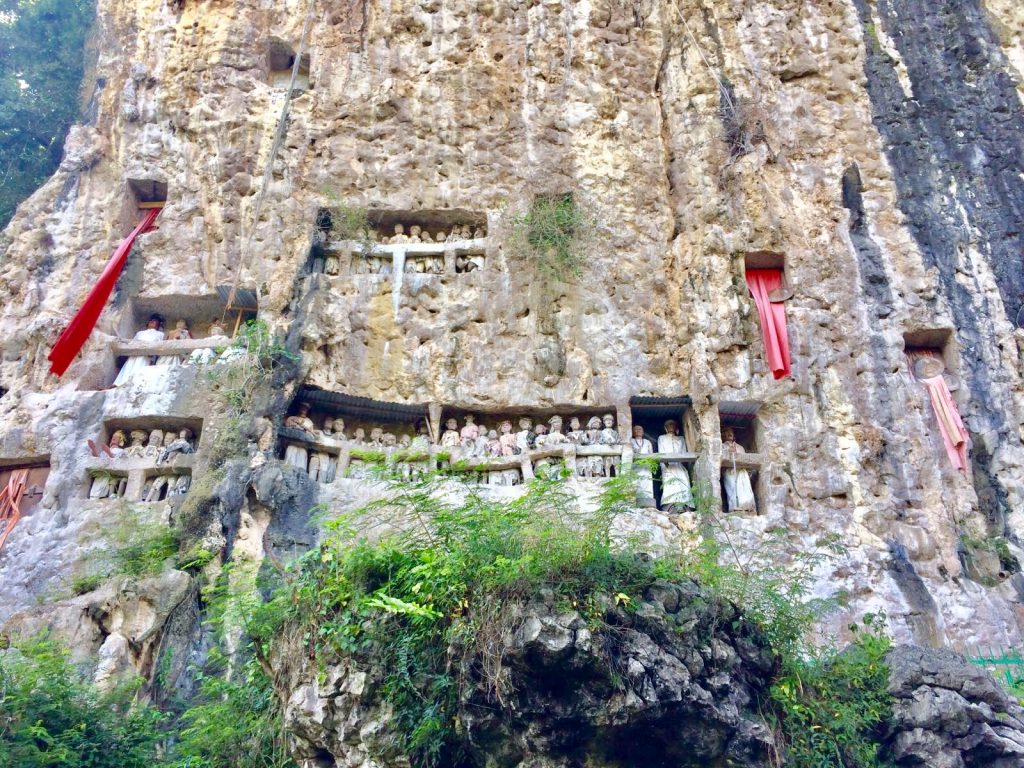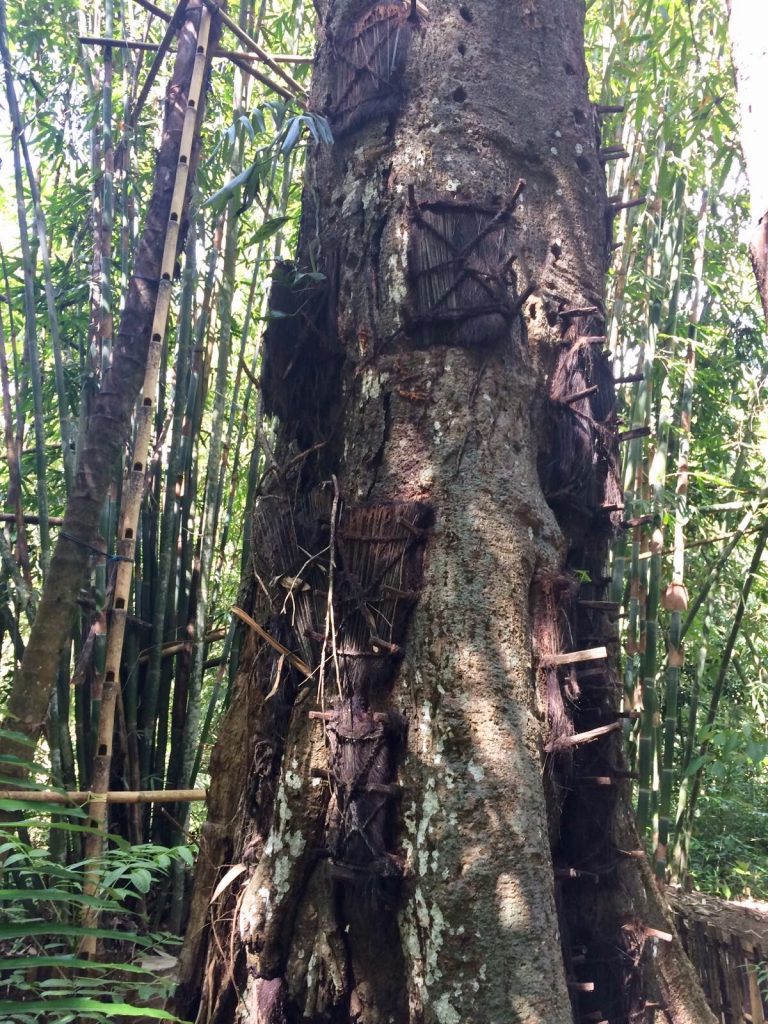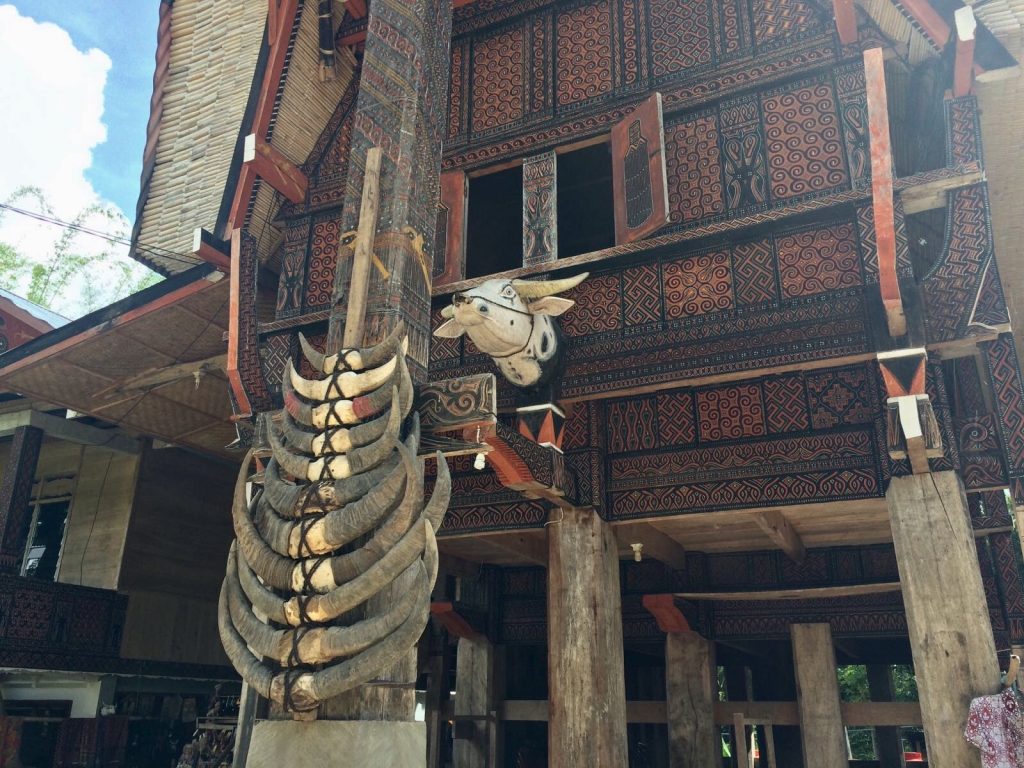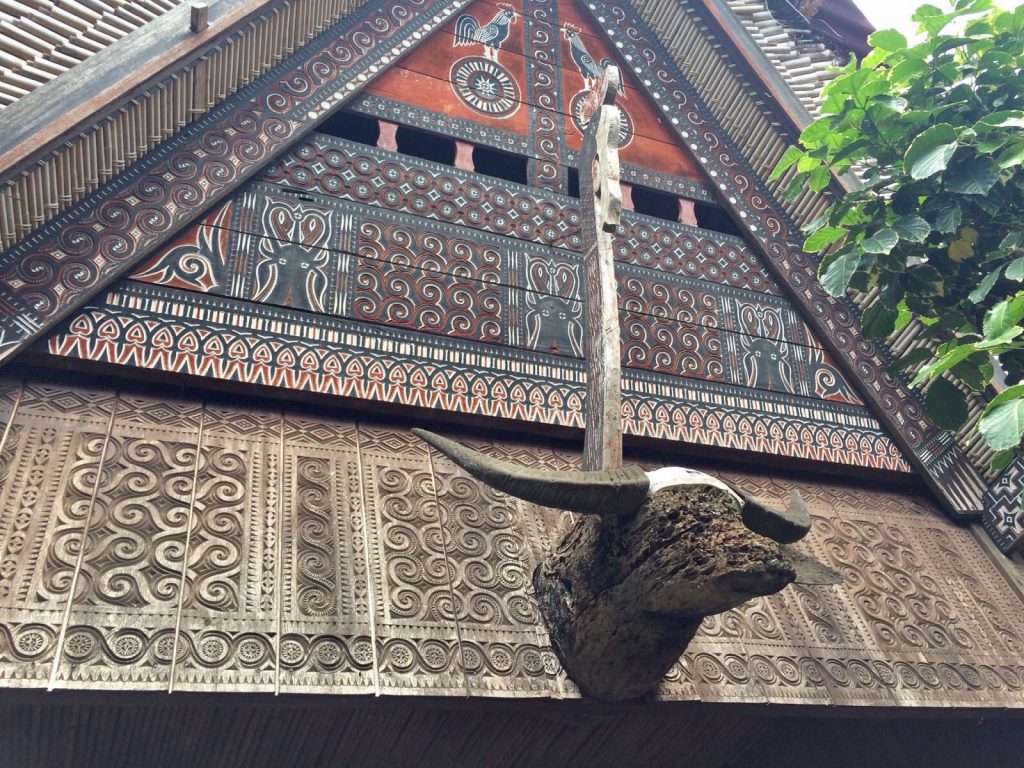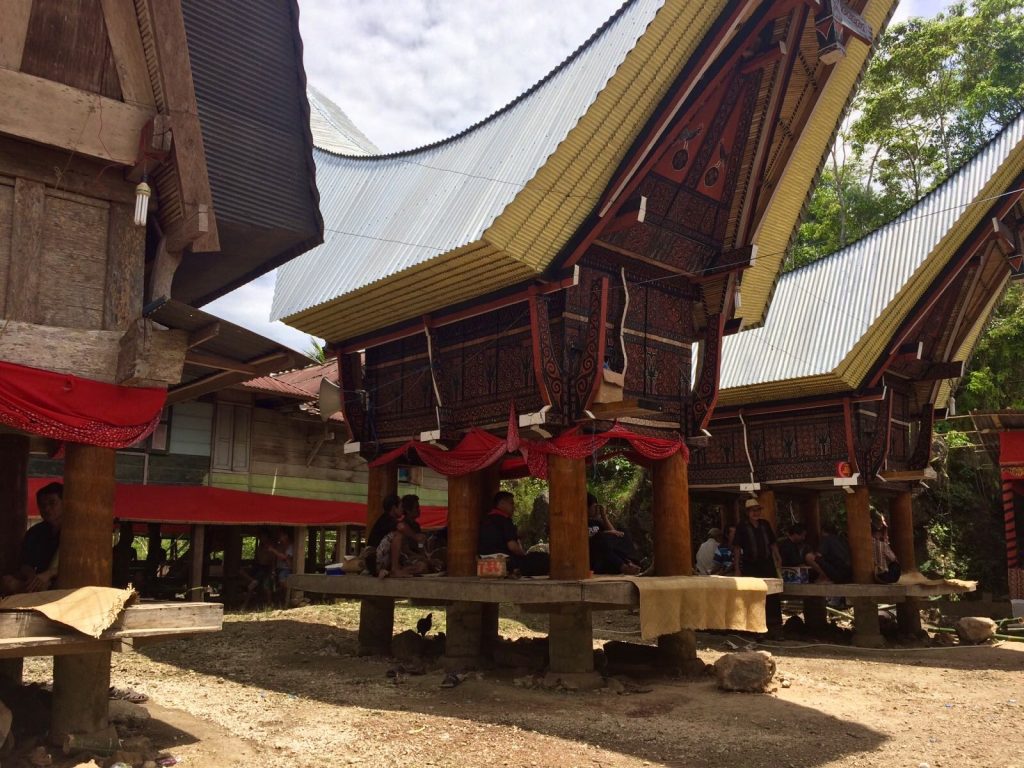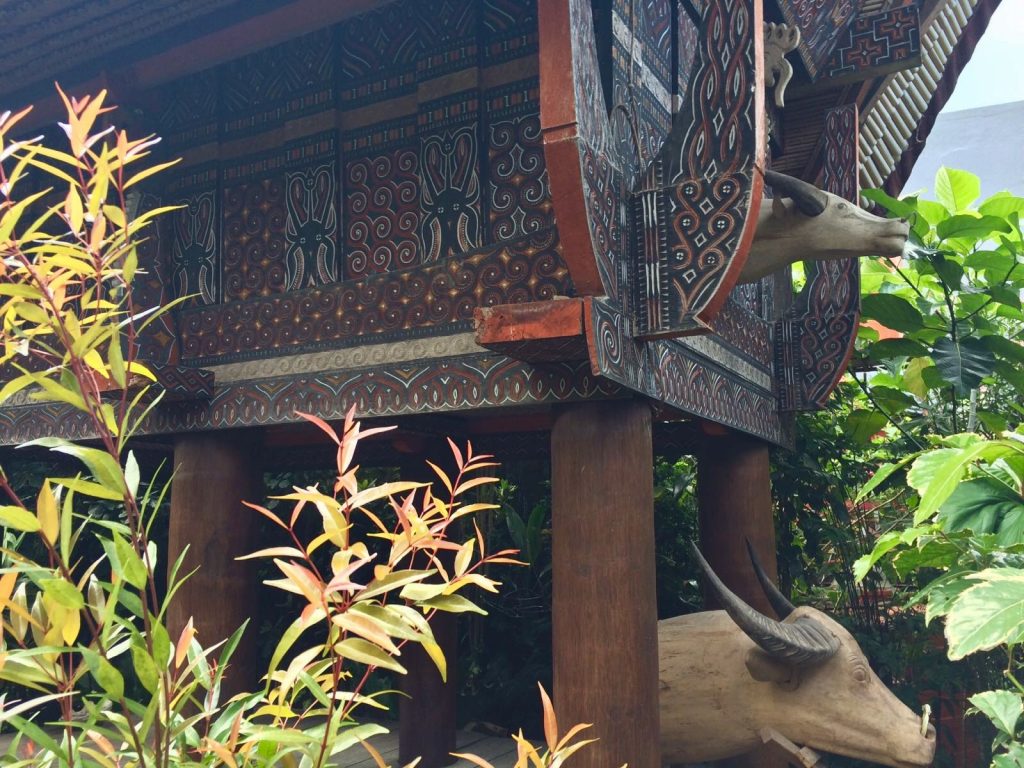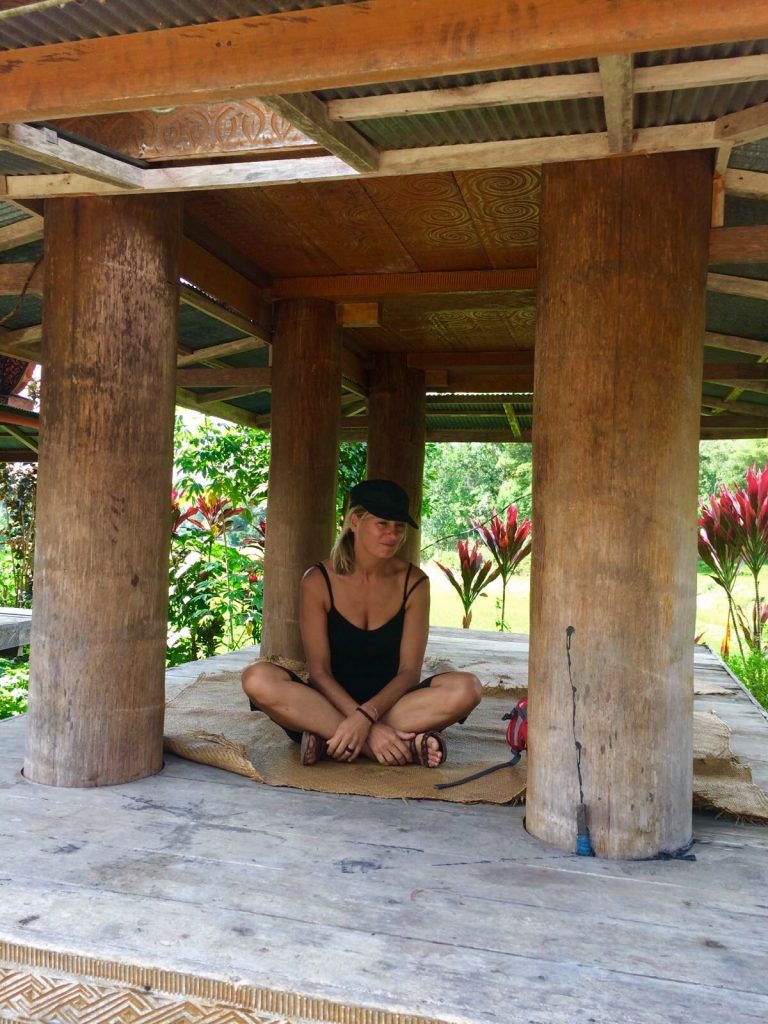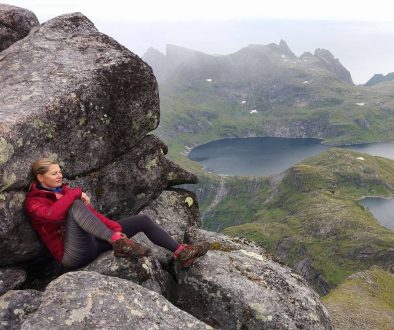W krainie Tana Toraja
Usłyszałam na Jawie pytanie, dlaczego w Indonezji mieszka tylu ludzi? (240 mln) Odpowiedź brzmi: bo każdy chce mieć szczęśliwe zakończenie.
Ceremonie pogrzebowe są ważną częścią życia mieszkańców wysp, ale w regionie Tana Toraja na wyspie Celebes, jest to coś wprost niezwykłego. Torajowie całe swoje życie oszczędzają na pogrzeb, który jest najbardziej okazałą uroczystością w ich życiu. Wierzą bowiem, że zanim dusza dotrze do królestwa zmarłych, Puya, musi zdać sprawozdanie ze swoich uroczystości pogrzebowych władcom tamtego świata. Aby mogła uczestniczyć w pogrzebie cała rodzina, często najbliżsi zmarłego czekają kilka lat, zanim wszyscy się zbiorą i mieszkają w tym czasie ze zmarłym w domu, oddając mu jedno pomieszczenie. Choć brzmi to nieprawdopodobnie, miałam okazję zobaczyć babcie, która umarła cztery lata temu i spoczywała w pół odkrytej trumnie, czekając na ceremonie pogrzebową. Dla Torajów taka osoba jest tylko chora. Pielęgnuje się ją, rozmawia z nią, przynosi żywność i papierosy. Zmarła staje się dopiero po pogrzebie. Nie ma żadnej trupiej woni, bo ciało jest zabalsamowane specjalnymi ziołami. Choć Torajowie w większości deklarują, że są chrześcijanami, kultywują swoje stare tradycje i animizm. Najważniejsze z nich związane są właśnie ze śmiercią. Okazuje się, że mamy „szczęście”, w hostelu oznajmiają nam – „You are lucky, there is a funeral on Monday.”więc uda nam się uczestniczyć w niezwykłym pogrzebie. Jakkolwiek dziwacznie to zabrzmi powstało tu coś w rodzaju turystyki pogrzebowej (!!!).
W takich okolicznościach wynajęcie przewodnika jest konieczne. Jest to ktoś z Torajów, kto poinstruuje jak mamy się ubrać, zachować i wytłumaczy panujące obyczaje. Rano Peri, który ładnie mówi po angielsku, zabiera nas do położonej daleko w górach wioski. Po drodze kupujemy obowiązkowy prezent dla rodziny zmarłego – papierosy. Ubieramy się w ciemne kolory z zasłoniętymi ramionami. Gdy docieramy na miejsce, większość rodziny i znajomych jest już zgromadzona i gawędzi wesoło, siedząc w prowizorycznych pomieszczeniach z bambusa. Nasza obecność jest mile widziana, dzieci kolorowo ubrane, ustawiają się do zdjęcia, córka zmarłego dziękuje za prezent i częstuje herbatą. Generalnie nie widać po nikim smutku, tylko radość. Wygląda to bardziej na czyjeś przyjęcie urodzinowe, niż na pogrzeb. Pytamy o zmarłego naszego przewodnika. Senior umarł cztery miesiące wcześniej, w wieku 90 lat albo 100, dokładnie nikt nie wie. Zapraszają nas do pawilonu kobiet najbliższej rodziny, skąd będziemy obserwować uroczystość.
***
I heard a question on Java, why so many people live in Indonesia? (240 mln) The answer is: because everyone wants to have a happy ending. Funeral ceremonies are an important part of life for the people of the islands, but in the region of Tana Toraja on Sulawesi island, this is something really out of ordinary. They believe that the soul before it reaches the kingdom of the dead, Puya, must give a report from it’s funeral celebration to the rulers of the other world. To gather the whole family for the funeral, relatives of the deceased often wait several years before all members of the family are able to come. To that moment they live with the deceased at home, giving him one room. Although it sounds crazy, we had a chance to see the grandmother who died 4 years ago and still lays in half open coffin, waiting for her funeral ceremonies. For Toraja such person is just sick, she is being taken care of, even given food and cigarettes, it becomes dead after the funeral. There is even no dead odor, the body is embalmed with special herbs. Although the majority of Toraja say they are Christians, they cultivate their old traditions and animism. The most important for them are those related to death.
It turned out that we are „lucky”, at least that is what they told us at the hostel – „There is a funeral on Monday.” So we will be able to participate in an unusual event. However strange it may sound they have created here sort of tourism funeral (!!!).
In such circumstances, hiring a guide is necessary. This is one of Torajas who will instruct as what to dress and explain the customs. At the morning Peri, who nicely speaks English, takes us to the village located in the hills. On the way we buy obligatory gifts for the family of the deceased – cigarettes. We dress in dark colors with concealed arms. When we reach the place, the majority of family and friends is already there, chatting cheerfully, sitting in a provisional rooms made of bamboo. Our presence is welcome, children are colorfully dressed, posing for the photos, the daughter of the deceased is thanking us for the gifts and serves tea. Generally no sadness rather joy. It looks more at someone’s birthday party than a funeral. We ask our guide about the deceased. Senior had died four months earlier, at the age of 90 or 100, no one really knows exactly. They invite us to the pavilion of closest women in the family, where we will watch the ceremony.
-Kasia

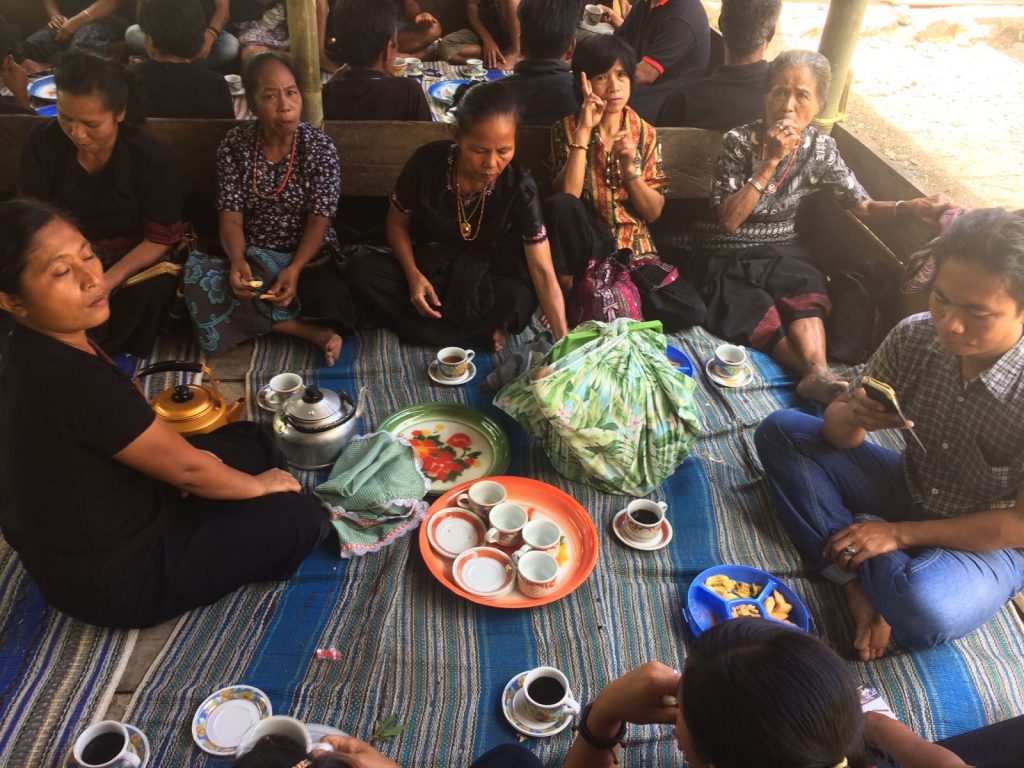
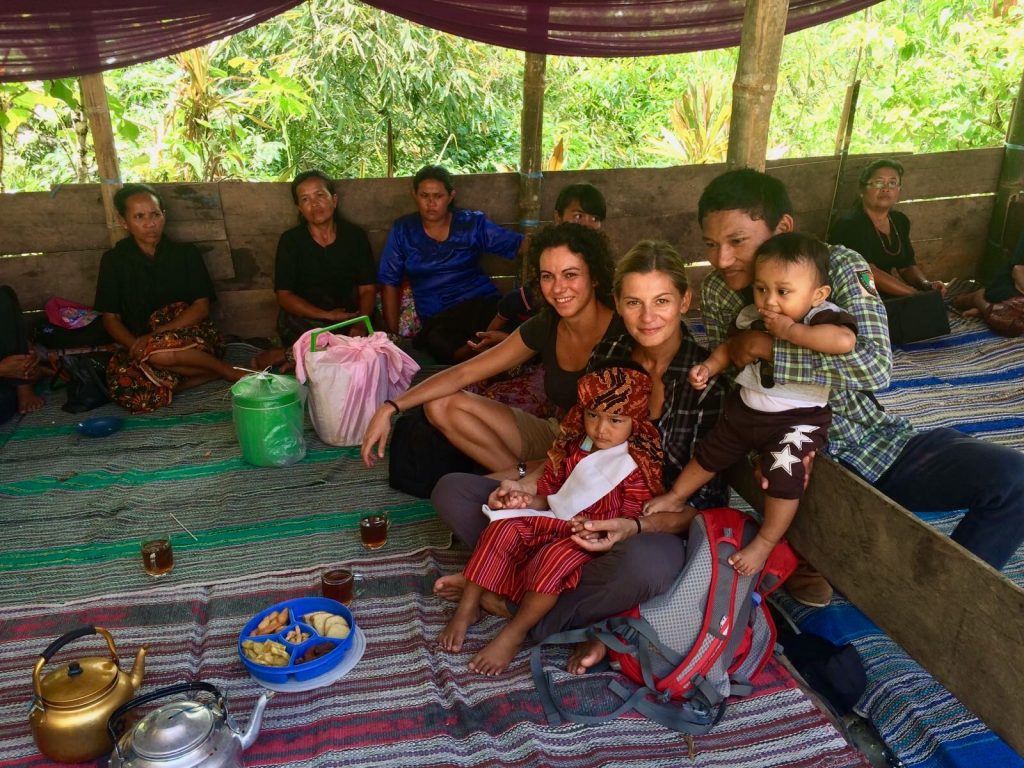 Na to co będzie dalej nie jesteśmy przygotowane. Rytualne zabijanie bawoła i świń, czyli składanie ofiary, jest punktem kulminacyjnym pogrzebu. Torajowie wierzą, że bawół jest przodkiem człowieka i pośredniczy między światem żywych i umarłych. Zaprowadzi więc dusze zmarłego do krainy Puya. Ilość zabijanych bawołów zależy od statusu społecznego zmarłego i może wynosić nawet kilkadziesiąt sztuk. I to właśnie jest najbardziej kosztowne – bawoły. Na pogrzebie obecny jest też przedstawiciel rządu, który przychodzi pobrać podatki od każdej zabitej sztuki.
Na to co będzie dalej nie jesteśmy przygotowane. Rytualne zabijanie bawoła i świń, czyli składanie ofiary, jest punktem kulminacyjnym pogrzebu. Torajowie wierzą, że bawół jest przodkiem człowieka i pośredniczy między światem żywych i umarłych. Zaprowadzi więc dusze zmarłego do krainy Puya. Ilość zabijanych bawołów zależy od statusu społecznego zmarłego i może wynosić nawet kilkadziesiąt sztuk. I to właśnie jest najbardziej kosztowne – bawoły. Na pogrzebie obecny jest też przedstawiciel rządu, który przychodzi pobrać podatki od każdej zabitej sztuki.
Sam pogrzeb trwa do 7 dni. My widząc makabryczny akt zabijania jednego bawoła, przez poderżnięcie gardła mamy dość…Obdarte ze skóry i poćwiartowane zwierze, zostanie upieczone i podane zebranym gościom, a głowa z porożem powędruje do domu zmarłego. Opuszczamy uroczystość deklarując wegetarianizm…
***
We were not ready for what was coming. The ritual of killing the buffalo and pigs, the sacrifice, is the culmination of a funeral. Toraja believe that the buffalo is the ancestor of human and mediates between the world of the living and the dead. It will the souls of the dead to the land of Puya. Number of killed buffalo depends on the social status of the deceased and can be up to several dozen. And this is the what’s most expensive -the buffaloes. At the funeral also the government’s representative is present who comes to collect taxes from each killed animal. The funeral itself lasts for 7 days. Seeing the horrible act of killing the buffalo, by slitting it’s throat makes us want to see no more … skinned and butchered animal will be baked and served for the guests, and the head will go to the house of the deceased. We leave the ceremony declaring becoming a vegeterian…


Po drodze Peri pokazuje nam grobowce skalne. Torajowie chowają ciała w grobach skalnych, wysoko nad ziemią. Chodzi o ochronę miejsca pochówku przed zwierzętami i złodziejami. W wydrążonych dziurach chowa się zwłoki, a wizerunek zmarłego, wyrzeźbiony w drewnie, ustawia na „balkonie” skalnym. Balkony należą do pojedynczych rodzin.W jeszcze bardziej niezwykły sposób chowane są dzieci, które umarły zaraz po urodzeniu albo przed wyrośnięciem pierwszego zęba. Dla nich przygotowane są dziuple w drzewie, w których są pionowo wstawiane. Dziecko czerpiąc soki z drzewa jak mleko matki, powróci do natury i dalej powędruje do krainy Puya.
Tana Toraja to niezwykły świat wierzeń, magii i tradycji. Niezwykłe są także ich domy, którymi przypłynęli tu z Indochin ich przodkowie. Znalezienie się w Tana Toraja, to jak poznanie innego wymiaru czasoprzestrzeni; ). To unikat, który pozostanie na zawsze w mojej pamięci…
***
Along the way, Peri shows us the rock tombs. Toraja bury their bodies in the grave rocks, high above the ground. It’s to protect the burial from animals and thieves. The hollow holes are hiden the corpse and the image of the deceased carved in wood is set on the „balcony” rock. Balconies belong to individual families. Even more unusual way of burial is for the children who died shortly after birth or before having the first tooth. For them are prepared hollows in the trees in which they are vertically inserted. The child by drawing sap from the tree as mother’s milk will return to nature, and afterwards to the land of Puya.
Tana Toraja is an extraordinary world of beliefs, magic and tradition. Unusual are also their homes, which their ancestors used to sail here from Indochina. Finding ourselves in Tana Toraja, is like learning about another space dimension : ). It’s a unique experiance which will remains forever in my memory…